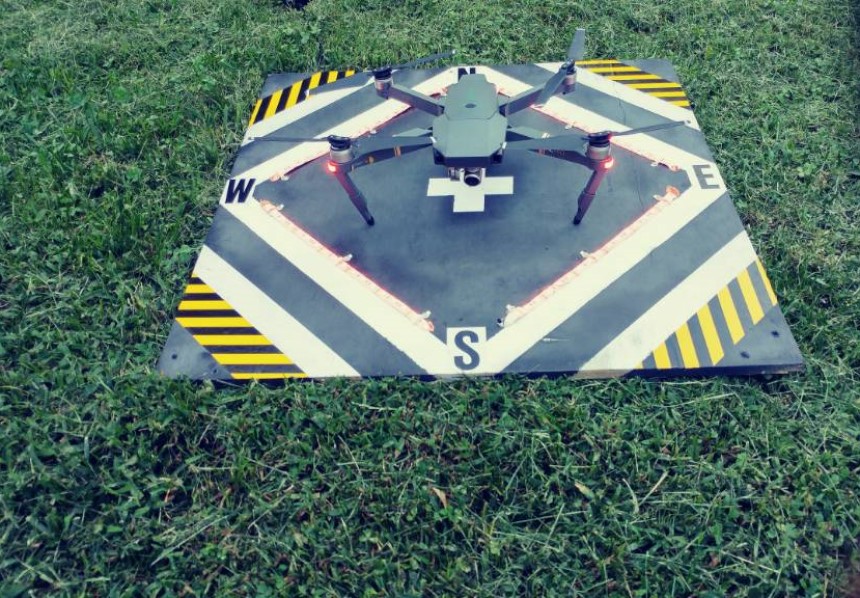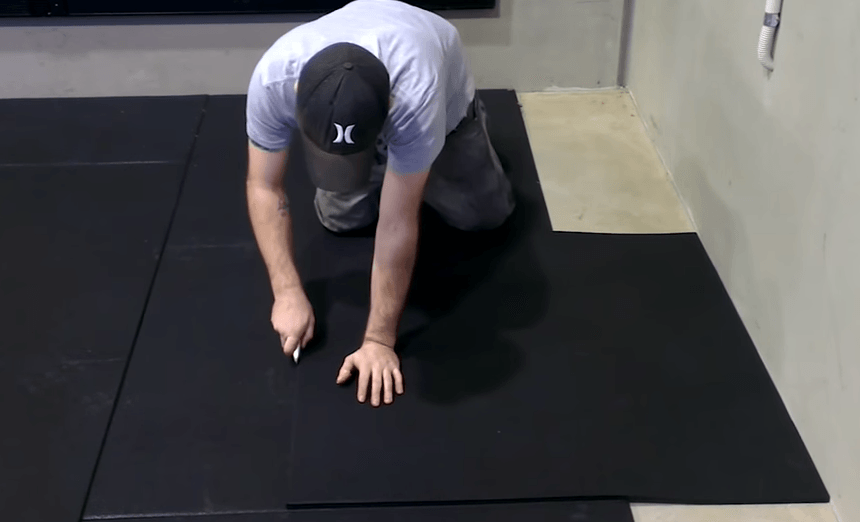Drones are awesome. Plus, they’re having a major moment right now Trusted Source The Drones Were Ready for This Moment New Yorkers strolling along the East River early last month glanced up to see an unsettling sight: a mysterious drone claiming to represent something called the “Anti-Covid-19 Volunteer Drone Task Force” barking orders to pedestrians below to maintain social distancing. www.nytimes.com . Having a drone isn’t all fun and games, though. They require maintenance and proper care. Similar to the way helicopters often use specific landing pads to ensure a safe landing, drones can benefit from the same setup. Using a landing pad for a drone can have a lot of benefits, including preventing any debris (like dirt, grass, and other stuff) from damaging the blades. It is possible to purchase a drone landing pad, but we suggest making one yourself using our drone landing pad DIY guide. This method is much simpler and a whole lot cheaper, too.
For all of about $5.00, you can construct a great personalized drone landing pad that can protect your drone from damage during take-off and landing (which, as you probably know, are the times when the most damaging drone accidents occur). Whether you decide to purchase one or make one, we know you’ll be glad you invested in a landing pad for your drone. Read on to learn more!

That’s how some drone landing pads look like.
Whether you’re new to the wonderful world of drones or just starting out, you’re probably aware that drones are a) an investment and b) pretty fragile if you don’t handle them correctly. It can be all too easy to accidentally crash or damage your drone during take-off and landing, which provides a strong case for using a drone landing pad.
One of the reasons that drones can get damaged during these actions is because the propellers can stir up a lot of dust and debris as they touch down. These airborne particles can then lodge themselves inside the various mechanisms of your drone, which can prevent them from working properly (or at all). If you’ve been landing your drone without a pad, you may be thinking, “my drone has been working just fine without one!” Sadly, the damage can occur over a period of time and, in some cases, may not be fixable. If you think you may have damaged your drone and are interested in purchasing a new one, check out this list of excellent drones under $50 or, if you’re a Syma drone fan, check out this list of the best Syma drones.
Drone landing pads are objects that cover the portion of the ground where you intend to land your drone, allowing you to have a safe and dust-free landing (or take-off).
If you are wondering whether a drone landing pad is necessary, there are several reasons why you need it. First of all, using a landing pad is one of the best ways to protect your drone from damage during take-off and landing. They work by covering the spot where you want to land your drone, which prevents the dust and dirt beneath from flying into the air with the force of your drone’s propellers.
If aesthetics are important to you (or you just don’t feel like going through the trouble of making your own), we researched some of the landing pads available for purchase for you. This KINBON landing pad has nearly 5-stars with 4,000+ reviews and is loved by purchasers for its ability to fold up and repel water. By the way, you can fold this drone landing pad. This LUCKYBIRD landing pad is slightly more expensive, but due to its series of folds and flexibility, it is a great choice if you think you might be landing your drone on even ground.
If you’re more of the do-it-yourself type, you’ll love this easy-to-follow guide for making a DIY drone landing pad. You really only need one thing to make your own landing pad, and as long as you follow our tips and tricks, your landing pad will be perfectly functional and great regardless of the material you choose.
To make a drone landing pad yourself, you’ll only need a few simple materials and about ten minutes of your time. Here’s the list of what you need:

You don’t need any special tools, you can use whatever you have at home.
The beauty of making your own drone landing pad is that the process can be as simple or as complex as you desire. If you’re all about the quick and effective, you can complete the process in all 10 minutes. If you prefer to get more hands-on, you can get more involved by adding a painted design or cutting your landing pad to certain specifications. The steps are pretty simple:
For the quick and easy method:
For the quick and easy method, all you need to do is purchase something that you can use as your drone landing pad. We recommend visiting the dollar store to find something quick and cheap.
For the more in-depth method:
If you want to make a personalized landing pad, you can add a few more steps to the quick and easy method. Here are some things you may want to try:
There are a few things to remember when choosing your material: it should be heavy enough to withstand the winds created by your drone, and it should be larger than your drone by a decent margin.
If you can’t find a rubber welcome mat (or prefer a different option), you can try using foam floor mats (the kind that interlocks like puzzle pieces). This way, you can use as many as you want to achieve the desired size. You can also make a printable drone landing pad by finding a necessary pattern on the internet (it is an excellent option for those looking for a DIY foldable drone landing pad).
Is Moment drone landing pad good?
Moment drone landing pad is praised among users for its quality. It is foldable, sturdy, and doesn’t flop around when a drone takes off and lands. It is perfect for Mavic drones.
We love drones, and we bet you do too. They’re great for everything from wedding photography (seriously! Check out this list for yourself) to exploring the unknown Trusted Source The FPV drone pilots taking cameras where humans can't go Van Jason is a cinematic FPV drone pilot and videographer. While drones for filming have been around for years, FPV has opened up new possibilities for videographers and content creators. Pilots “see” from the drone’s point of view, wearing a pair of goggles to watch the live transmission. These drones allow them to record a vast array of shots, while also flying at extremely high speeds — in turn, creating more dynamic and fast-paced videos. “It’s like you’re a bird,” he explains. “You can fly wherever you want.” www.cnn.com to sports games (we suggest using a lightweight drone in crowded places). With great fun comes great responsibility, though (or however that saying goes!), and you need to be diligent about caring for your drone. For this reason, using a landing pad is a great idea for keeping your drone safe.
There are a lot of different types of landing pads out there, so for best results, be sure to choose the right one for your drone type, size, and weight. You should also make sure to clean and care for your landing pad to ensure that dirt and dust don’t accumulate on its surface. We hope you enjoyed this drone landing pad DIY!